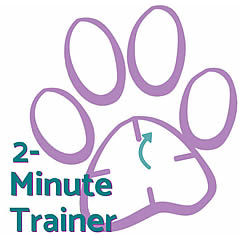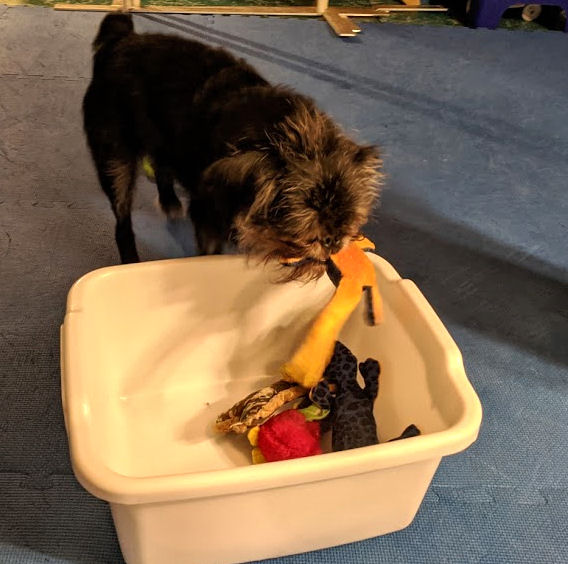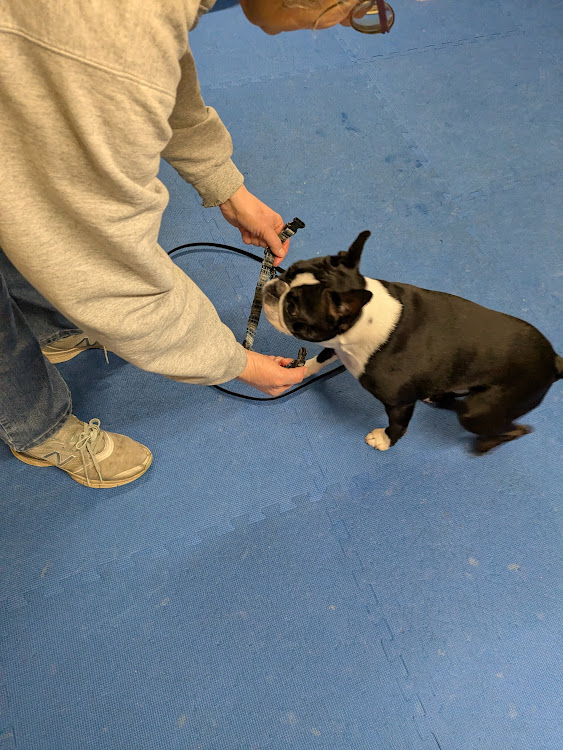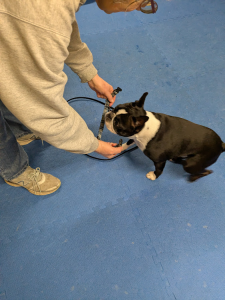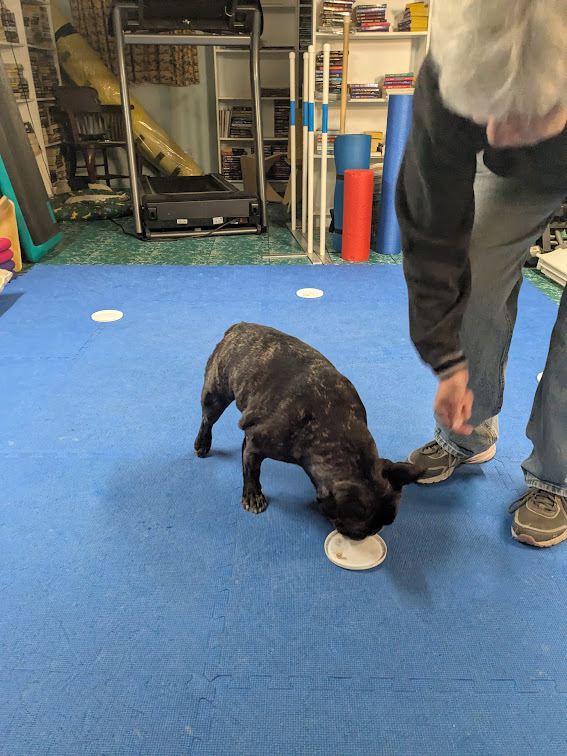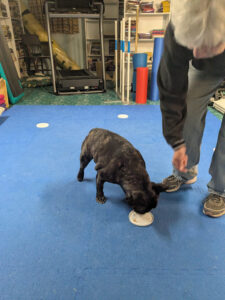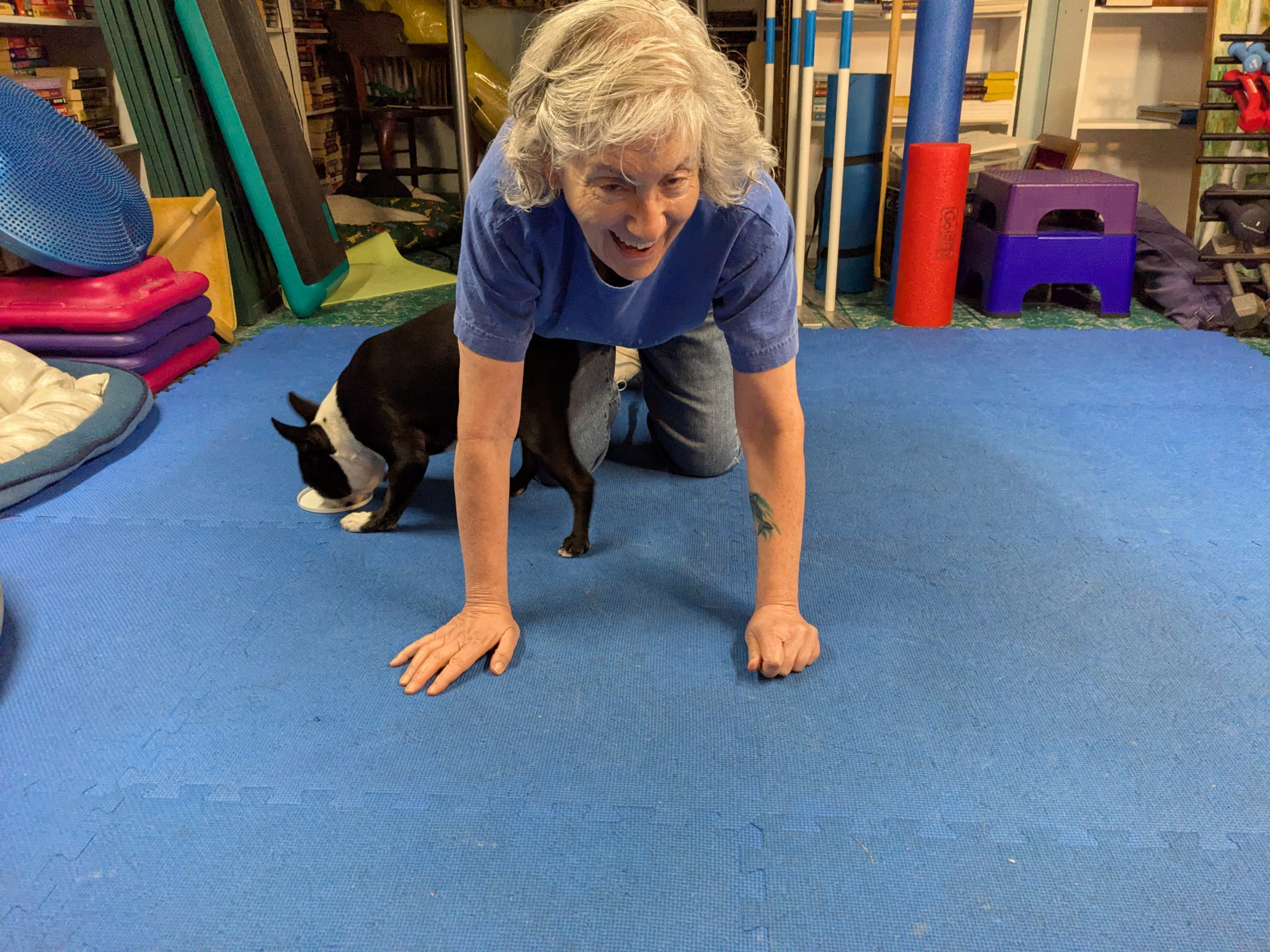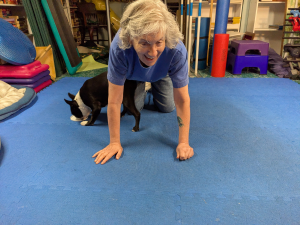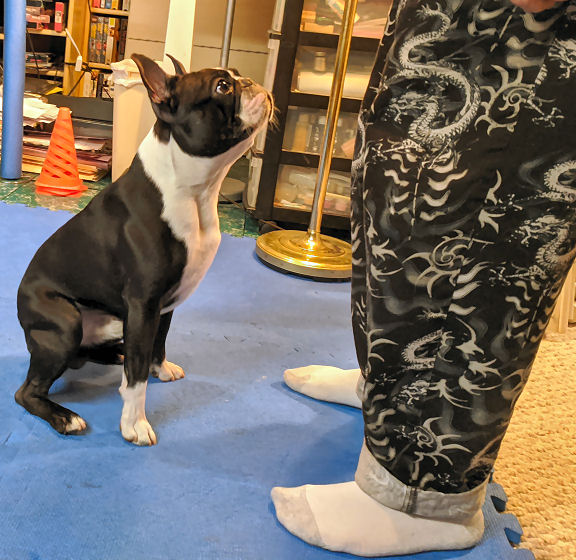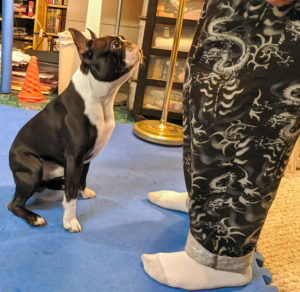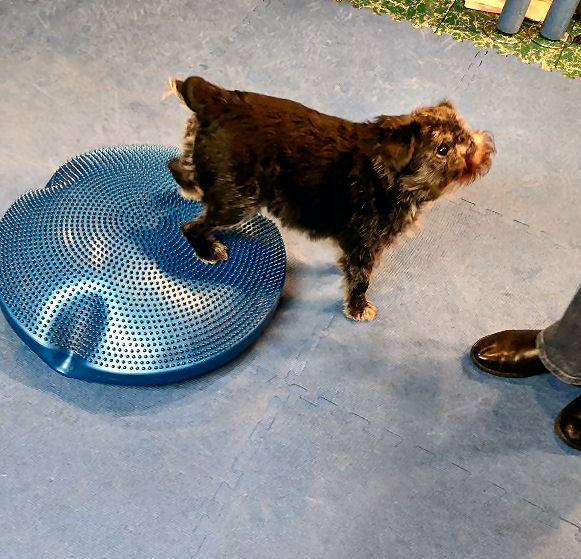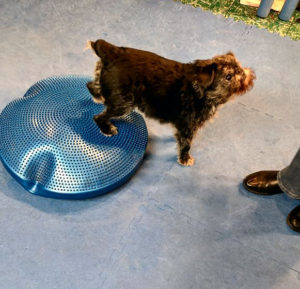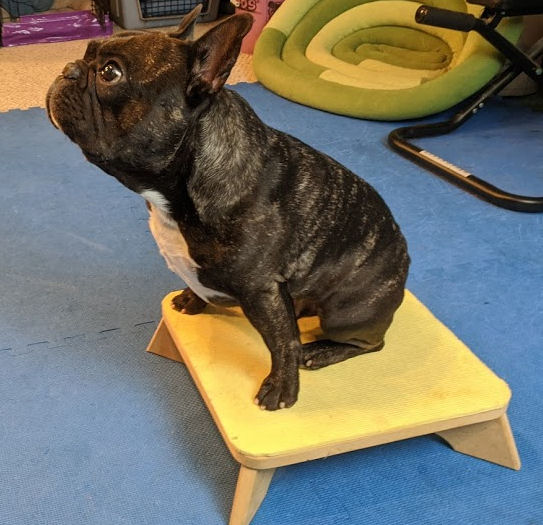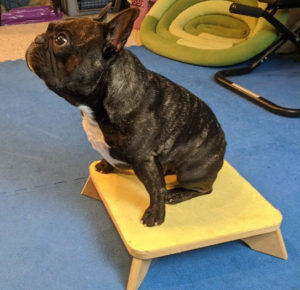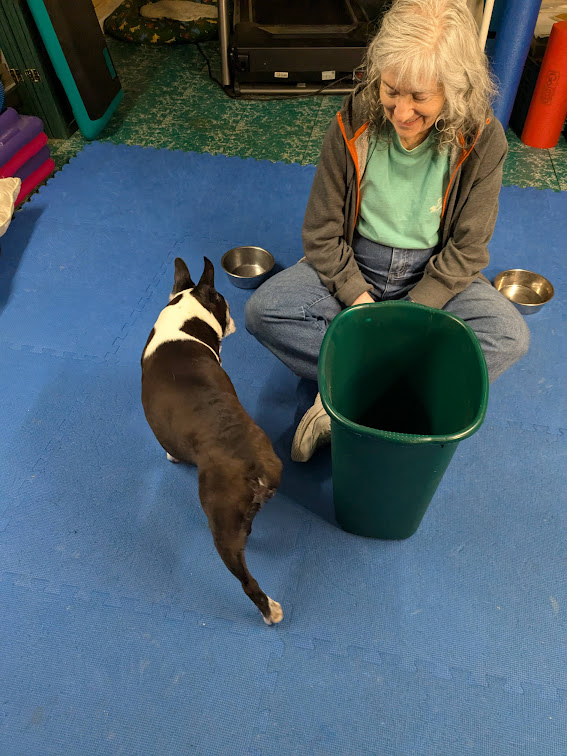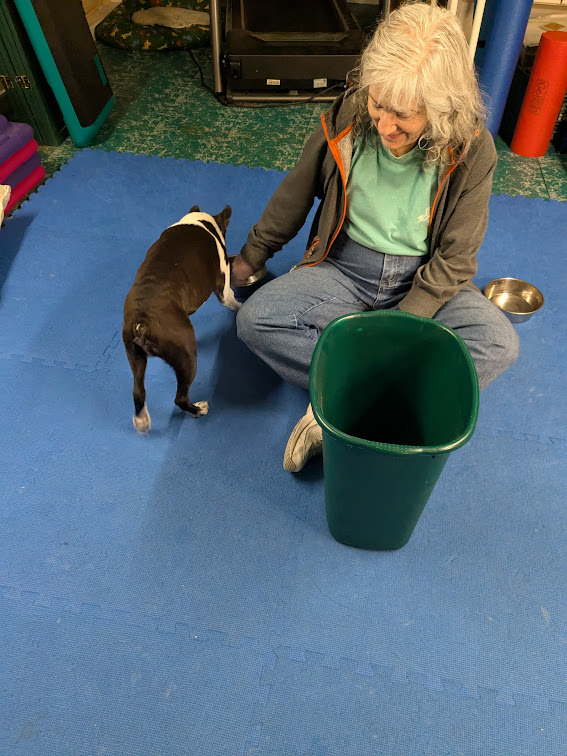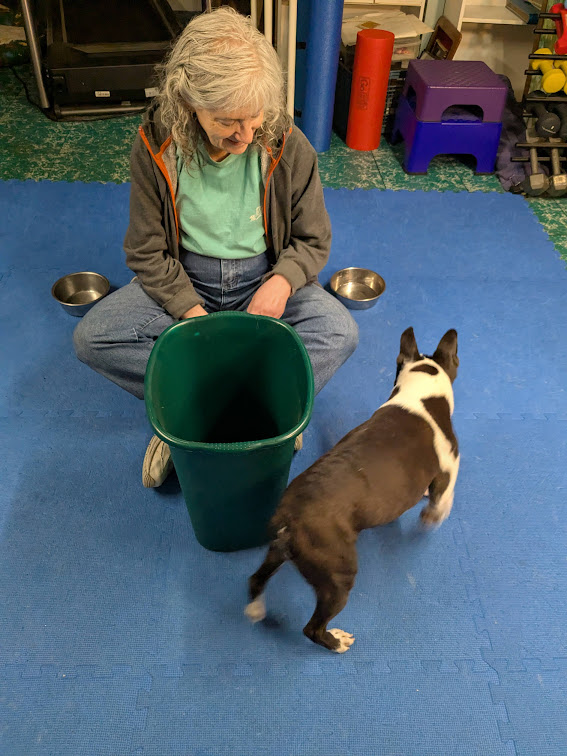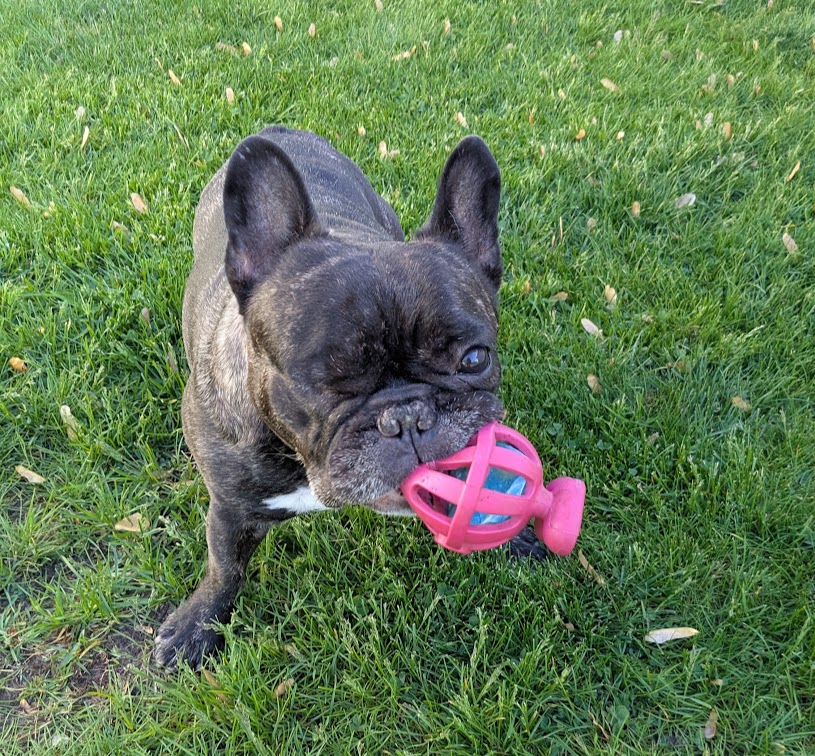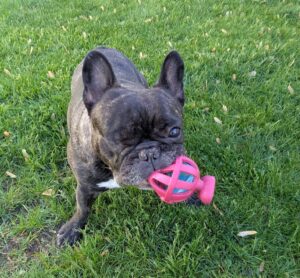When we were kids, our mom worked in Downtown Chicago, in the Loop. During the summer, we would take the “El” into the city to meet her for lunch at the Veranda Room in Marshall Field’s department store. No, there were no dogs there. What was at Field’s, above the first floor cosmetics department, was a magnificent mosaic ceiling, designed by Louis Comfort Tiffany.
Why this trip down memory lane? Because it gave us great joy to stand in the cosmetics department and stare up at the ceiling made of more than a million pieces of iridescent glass. When our necks got tired, we’d look back to ground level and realize that everybody around us was staring up at the ceiling, too. People do that. If you really look at something, everyone around you will stop and look.
So will dogs. And that’s how you start playing the “Which Bucket?” game with your dog.
Variation on a theme
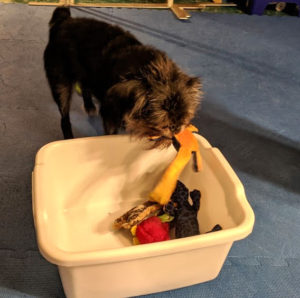
Quite a few of the games we play with our dogs involve them retrieving something and putting it someplace else – the Ring Stacking Game, for one. It’s also the nuts-and-bolts of “Put Your Toys Away.”
The dog only has one place to put whatever it is.
But what if there were two? Or more? And what will the dog do if both containers are identical? or different? All of these options are ways to refresh any “put it away” game. If you just want to add a fun challenge to your game, use any variation and let your dog have fun.
Directed aim
If you want to use the game to strengthen your training connection with your dog, try directing your dog to a specific container. There are a couple ways of doing this. The first is to just look at the container you want your dog to use. Just like staring at the mosaic ceiling, pretend that it’s the most fascinating thing you’ve ever seen in your life. Bend over, get as close as you can.
Keep up a dialogue with your dog. Encourage them, talk to them. Invite them over to check out the neato-keeno container. Remind them to bring the toy/ring/block with them. Talk to your dog and project some enthusiasm and energy. Dogs respond to the atmosphere in the room, so make it fun.
Point it out
The other way to direct your dog to the bin you want them to drop the object in is to point at it. We’ve talked about how some dogs naturally follow a point. For others, it’s a learned skill. But all dogs are capable of it – it’s been part of Obedience competition for years.
Put the two containers out and sit on the floor about equal distance from each one. Bring a bunch of objects you want your dog to put away. We used the dive rings from our ring-stacking game. Hand one of the objects to your dog and point, with one hand or both, to the container you want the dog to put it in. Be sure you also look where you want your dog to go, not at your dog. Facing your dog always stops them. Looking where you want them to go gives them direction.
When the dog moves away from you, toward the container you indicated, celebrate! You’ve just opened another line of communication with your best friend.
